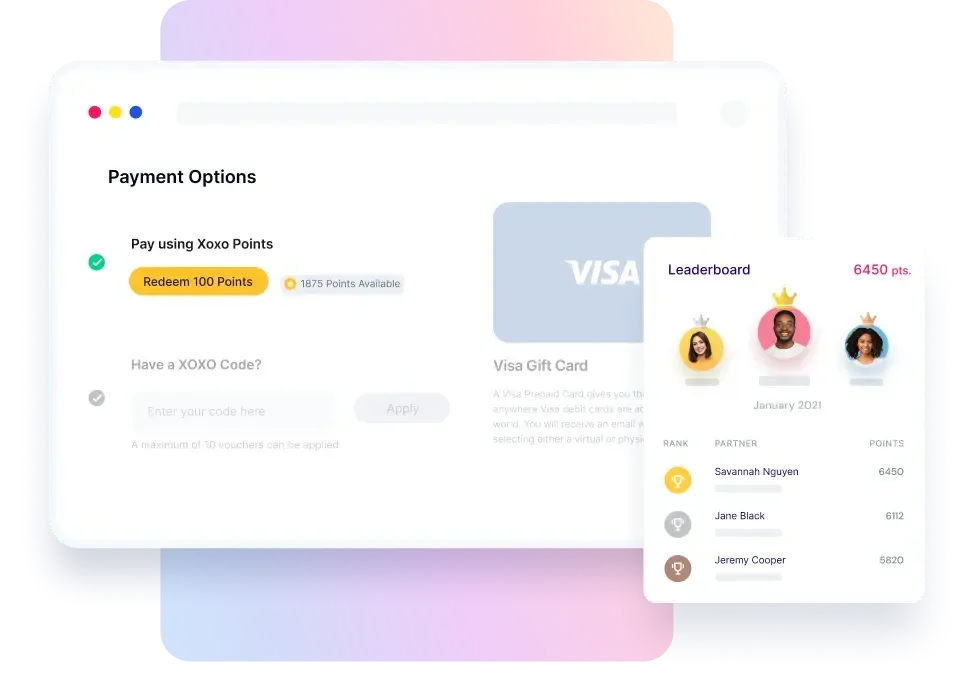In questa pagina
Why is it so difficult to toss that dress or the shirt that you know you are not going to wear? Or give away that book that has been on the shelf forever, and you haven’t read? Why is it not easy to give up that job that you absolutely hate doing?
Though you know that giving them up is the most rational thing to do, your mind still refuses to do so. Why are we so afraid of losing something? This is because we human beings are wired that way. We try to avoid loss more than trying to pursue a similar gain. This phenomenon is popularly known as Loss Aversion. In this article, witness a few loss aversion examples where this principle is applied to modify consumer buying behavior for marketing and employee behavior and attitudes for HR.
Nobel prize-winning psychologists Daniel Kahneman and Amos Tversky, proposed the Prospect theory in the year 1979, which popularized the concept of loss aversion. Even today, Prospect theory is considered to be one of the most influential theoretical frameworks in the field of behavioral economics.
Lo studio di Kanheman e Amos ha rilevato che gli esseri umani reagiscono in modo diverso ai guadagni e alle perdite, alle vittorie e ai fallimenti; in sostanza, a qualsiasi cambiamento positivo e negativo del nostro status quo. Perdere qualcosa (denaro, un oggetto, un lavoro, un grande affare, ecc.) può essere due volte più doloroso che guadagnare la stessa cosa.
Ad esempio, il dolore per la perdita di una banconota da 100 dollari che vi è caduta involontariamente mentre cercavate nel portafoglio può essere molto più grande di quello per aver ricevuto una banconota da 100 dollari in regalo da qualcuno.

L'avversione alle perdite non si limita all'emozione di perdere denaro o qualsiasi altro bene materiale. Si applica a ogni aspetto della nostra vita quotidiana. Fondamentalmente, l'avversione alle perdite come principio riguarda l'emozione umana - l'emozione di ridurre o ridimensionare qualsiasi cosa. Gli esseri umani hanno paura di perdere tutto ciò che "possediamo", che si tratti di relazioni, attività commerciali, idee, pensieri e quant'altro. Ad esempio, non sopportereste di perdere una discussione in cui state discutendo del vostro sport preferito, di ideologie politiche o di qualcosa che vi appassiona.
Businesses of today are investing a lot of time and money in understanding human behaviours and how subtle aspects of organizational policies, design, rewards, recognition etc. change can greatly influence employee and customer behaviors.
Loss aversion bias applied to consumer buying behavior for marketing
We have all come across marketing campaigns that say – “Limited period offer, only for you!”, “Best price, applicable only till midnight”, “Register now to get free service for a year”, “Last chance to buy”, etc. And most of us, at some point of time in our life, have been guilty of making an impulsive purchase, in fear of missing out on a great deal.
Have you also experienced this “Fear of Missing Out” or FOMO? Don’t worry, you are not alone. 70% of the millennials experience FOMO on a regular basis, says a recent study.

FOMO is nothing but a form of social anxiety, that has its deeper roots in the principle of Loss Aversion – and invokes fear of missing out on an exciting opportunity or a deal in people.

Il concetto di FOMO e di avversione alla perdita ha sicuramente catturato l'immaginazione di tutti i marketer. E non c'è da stupirsi se ogni sito web e ogni marchio, in un momento o nell'altro, hanno cercato di pubblicizzare un'offerta che "sta per finire" (e che nella maggior parte dei casi non lo è!).
However, one needs to be extremely careful not to overuse loss aversion in their customer campaigns. When overused, loss aversion can lead to what is called banner blindness – i.e., customers are unlikely to click on anything that looks like an ad.

“95% of the purchasing decisions are made subconsciously,” says professor Gerald Zaltman in his book How Customers Think: Essential Insights into the Mind of the Market. Emotion is what drives customers’ purchasing behaviors he says.
Hence, to effectively use loss aversion to increase conversion rate and brand engagement requires a precise understanding of your customer behaviors, what they are afraid of losing, and why, and providing them with an appropriate solution to avoid this loss.
Ecco alcuni esempi di strategie di avversione alla perdita che possono contribuire ad aumentare il tasso di conversione e il coinvolgimento dei clienti senza essere invadenti:
1. Condividere i dati rilevanti per aiutare il processo decisionale

Una pubblicità della Ford Galaxie (rilevante per gli anni '70) utilizza ampiamente i fatti nella copia dell'annuncio per il processo decisionale
Posizionate il valore che il cliente trae dal vostro prodotto. Quando un cliente vede il divario tra la situazione attuale e ciò che si perde senza il vostro prodotto, fa miracoli.
2. Use customer loyalty programs to give a friendly nudge
While using rewards and incentive programs with your customers, if you also set an expiry to the redemption of the same, it instils a sense of urgency amongst the customers – pushing them to take action sooner rather than later. The idea behind using rewards and incentives is to encourage customers to routinely engage in the product/ brand.

3. Creare un senso di appartenenza
Spesso sviluppiamo un forte legame con gli oggetti che possediamo. A tal punto che iniziamo a sopravvalutare l'oggetto (anche più del suo valore reale) e quindi a trovare difficile rinunciarvi. Questo, in psicologia, si chiama Effetto Dotazione.

Slack’s free trial and conversion rate of 40% reported in 2014 is an example of capitalizing on endowment
Quindi, quando si offre al cliente una prova gratuita o un campione gratuito del prodotto, si crea un senso di appartenenza per indurre un effetto di dotazione e influenzarlo positivamente. I clienti hanno la possibilità di utilizzare la versione completa del prodotto e sviluppano un legame così forte che è difficile perderlo al termine della prova, spingendoli ad acquistare il prodotto.
4. Provide with the right choices
Le ricerche dimostrano che i clienti tendono a scegliere un numero maggiore di funzionalità quando viene loro presentato un prodotto full-stack, completo di tutte le funzionalità, e quando possono scegliere quali funzionalità ridurre al momento del pagamento.

This feature comparison Ad copy of Volkswagen Jetta (2019) aims to diminish sensitivity towards the price.
In questo caso l'idea è quella di creare un senso di avversione alla perdita con le caratteristiche, che a sua volta ha il potere di diminuire la sensibilità verso il prezzo.
5. Utilizzare efficacemente le recensioni dei clienti
Social proofing is a great way through which your customers can feel connected to your products. So, when you introduce testimonials from other customers to which your audience can relate, it invokes a sense of missing out on something that can make a difference to them – again, pushing them towards the desired action.

Testimonials (like the one above of the Udemy business version) give social proofs for virtual business offerings
These examples are only indicative of how powerful loss aversion can be. Each organization can build their own strategies, based on what its target customers really want. When used effectively, loss aversion can be extremely powerful in influencing customer behavior.
Leveraging rewards to influence consumer behavior
While loss aversion primarily hinges on the psychological discomfort of losing something of value, integrating rewards into this concept can significantly amplify its effectiveness—especially in marketing and HR strategies. By framing rewards in a way that emphasizes potential loss instead of just gain, brands and organizations can create stronger behavioral nudges that drive consistent action.
Reward programs that reinforce retention
Traditional loyalty programs focus on the accumulation of points or perks, but adding a loss aversion layer makes them more compelling. When customers are reminded that their unused loyalty points are about to expire, or that a special offer will vanish after a set deadline, it introduces a psychological pressure to act quickly.
Example strategies:
- Expiring rewards: Create a sense of urgency by reminding users that their accumulated cashback or points will lapse if not redeemed within a specific timeframe.
This time-bound pressure leverages loss aversion and nudges users to act before they lose the benefits they’ve already earned.
- Tier downgrades: Show customers how close they are to maintaining a loyalty tier and warn them of upcoming downgrades if engagement drops.
- Limited redemption windows: Offer exclusive rewards or access for a short duration to increase urgency.
These small changes use loss framing to subtly encourage customer retention, repeat purchases, and ongoing engagement—because the idea of “losing out” on something already earned feels more painful than simply not receiving it.
Loss aversion bias applied to improve employee behaviors and attitudes
In a digital world that is becoming more and more transparent, blurring the line between personal and professional lives, employees constantly seek meaningful work and motivating rewards. Forward-thinking organizations are spending more and more time understanding employee behaviors and aligning them with organizational goals to constantly keep them motivated.
I principi economici tradizionali affermano che gli incentivi monetari, i premi e i riconoscimenti possono essere un ottimo motore per le prestazioni e il coinvolgimento dei dipendenti. Tuttavia, questi sono solo motivatori estrinseci e non rendono giustizia al quadro più ampio della motivazione dei dipendenti. Ad esempio, un dipendente che si impegna a fondo nella codifica di una funzionalità di un prodotto e la consegna entro i termini previsti, solo per guadagnare un buono Amazon.
Whereas behavioral economic principles suggest that monetary rewards, salaries, and bonuses alone are not sufficient to drive employee engagement. In fact, A review of 120 years of research found that the link between salary and job satisfaction is extremely bleak, and this is true globally.
"Dimenticate le lodi. Dimenticate le punizioni. Dimenticate i soldi. Dovete rendere il loro lavoro più interessante", ha detto Frederick Herzberg, psicologo americano.
Gli esseri umani prosperano grazie a motivatori intrinseci come l'autonomia, il senso dello scopo, la padronanza della materia, ecc. Si tratta di fattori motivazionali che provengono dall'interno e che spingono i dipendenti a fare qualcosa per la propria soddisfazione personale. Ad esempio, un dipendente che riesce a codificare una funzione complessa di un prodotto entro i tempi previsti, lo fa solo perché ama farlo e si diverte veramente nel processo di apprendimento.
When organizations consider these human idiosyncrasies to design employee engagement programs that nudge employee behaviors towards better performance and increased motivation, it truly works wonders.
Further to this, the loss aversion phenomenon shows that people are motivated better by the fear of loss than the promise of rewards. So, effective employee programs need to be designed in such a way that they not only reward success but also have a clause to penalize failures. Research has time and again proven that limited use of penalties has driven higher productivity and effectiveness amongst employees. At times, penalties can simply mean altercated language to communicate the feeling of loss – For E.g. “You will lose your extra 5% bonus if you don't complete the project by the end of the month”.
Vediamo alcuni esempi di come i programmi di ricompensa e riconoscimento possano essere strutturati in modo tale da far leva sull'avversione alle perdite dei dipendenti:
1. Constant positive feedback
Consistent, personal feedback and appreciation have a profound effect on human psychology.

Quando le azioni di un dipendente vengono apprezzate e premiate, si innesca automaticamente il desiderio di eseguire nuovamente l'azione, in modo migliore. La soddisfazione di ricevere un feedback positivo può essere un'enorme motivazione, che i dipendenti non vorrebbero perdere.
2. Implement instant gratification
Per i dipendenti è importante che i risultati ottenuti vengano riconosciuti, sotto forma di incentivi, premi a sorpresa, ecc. - prima che dopo.
Se da un lato la gratificazione istantanea è un'enorme spinta al morale per chi raggiunge i risultati, dall'altro motiva gli altri membri del team a competere più duramente per raggiungere i propri obiettivi.

Con Empuls gli utenti possono inviare istantaneamente premi e apprezzamenti
3. Keep innovating, keep changing
Continuate a cambiare i premi in modo che i dipendenti non si accontentino di ciò che viene offerto.

I dipendenti devono essere incuriositi, coinvolti e motivati a lottare per ottenere la ricompensa. Un ottimo programma di incentivi non è mai statico.

Compass utilizza premi graduali e basati su obiettivi intermedi per le prestazioni.
4. Gamification
Le organizzazioni adottano sempre più spesso tecniche di gamification (come classifiche, badge, ecc.) per aumentare la motivazione dei dipendenti e ottenere risultati misurabili.

‘Avoidance’ of ‘loss aversion is one of the 8 core drivers in gamification design.
Gamification is known to deliver proven results like – increased engagement, improved performances, increased competition, while instilling positive behavior.

Compass utilizza elementi di gamification come le classifiche per guidare le prestazioni.
Using rewards and recognition programs to strategically influence employee behaviors can drive better engagement and improved performance.
Leveraging rewards to influence employee behavior
In workplace contexts, incentives don’t always have to be structured around future gains. Instead, forward-thinking companies are now experimenting with “prepaid” bonuses or rewards that employees stand to lose if performance expectations aren’t met. This flips the traditional model—motivating through potential loss rather than distant rewards.
Example strategies:
- Performance bonuses: Provide a performance bonus upfront with the clause that it will be deducted if quarterly targets aren't met.

- Gamified leaderboards: Reset performance rankings monthly or quarterly using a leaderboard, so employees are incentivized to maintain their position and not “fall behind.”

- Time-sensitive recognition programs: Offer spot awards with a redemption window, emphasizing the urgency to act before they vanish.
These tactics align with behavioral economics findings: people will work harder to retain what they believe is theirs than to earn something new.
Riflessioni finali
Behavioral economics principles like loss aversion play a huge role in employee or customer behaviors. While these principles can greatly influence behaviors, the idea of using these in workplaces should be to increase engagement and not invoke a sense of fear.
Rewards, recognition, and incentives when designed with behavioral economics principles, works wonders in shaping employee and customer behaviors. Understanding their needs and fears can help you design loyalty and engagement programs that can positively influence their behaviors.
Keen to know more about how to apply loss aversion to drive your customer and employee behaviors?
Connect with our experts and know how Xoxoday products help you use loss aversion to your advantage.


















